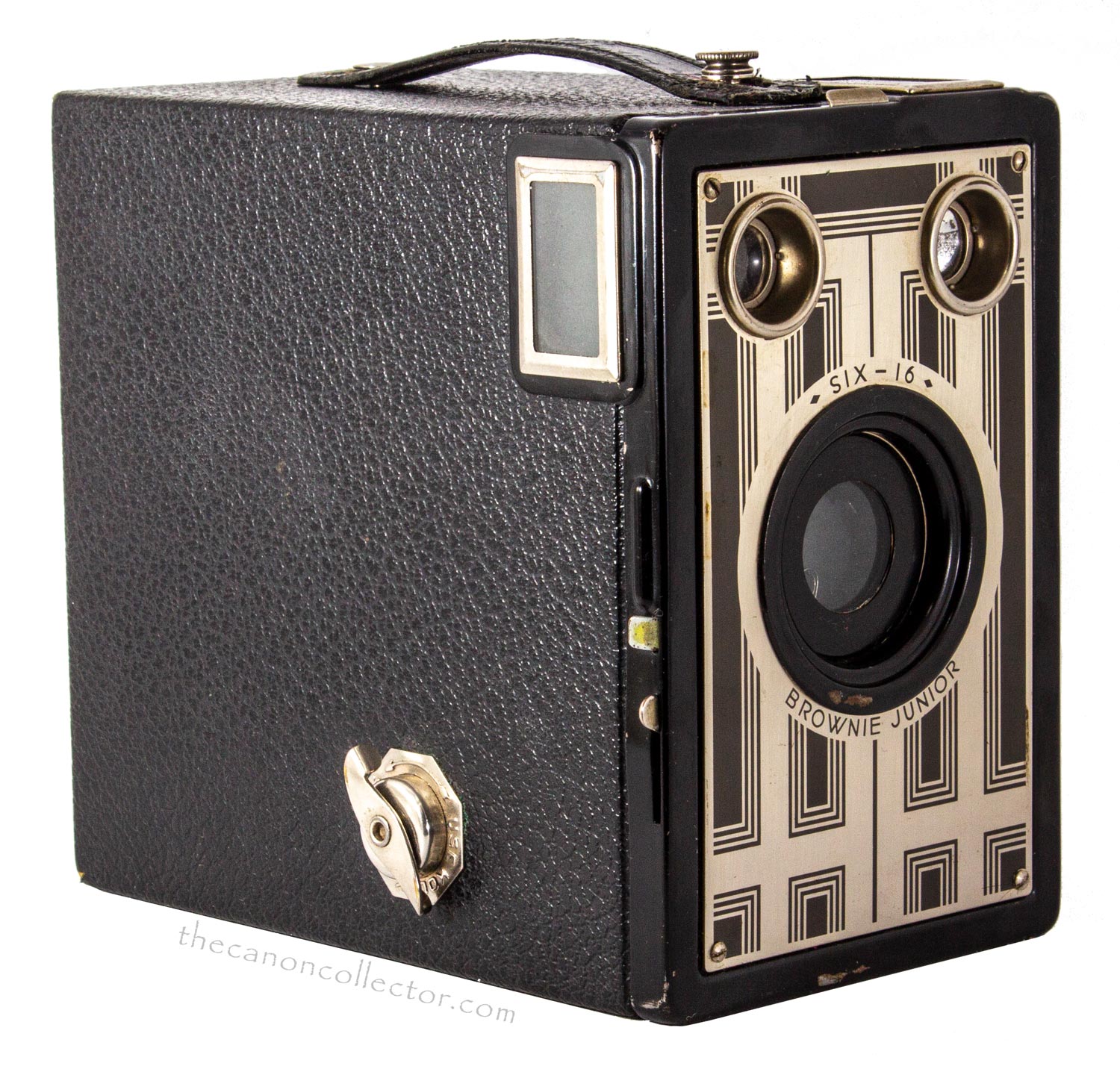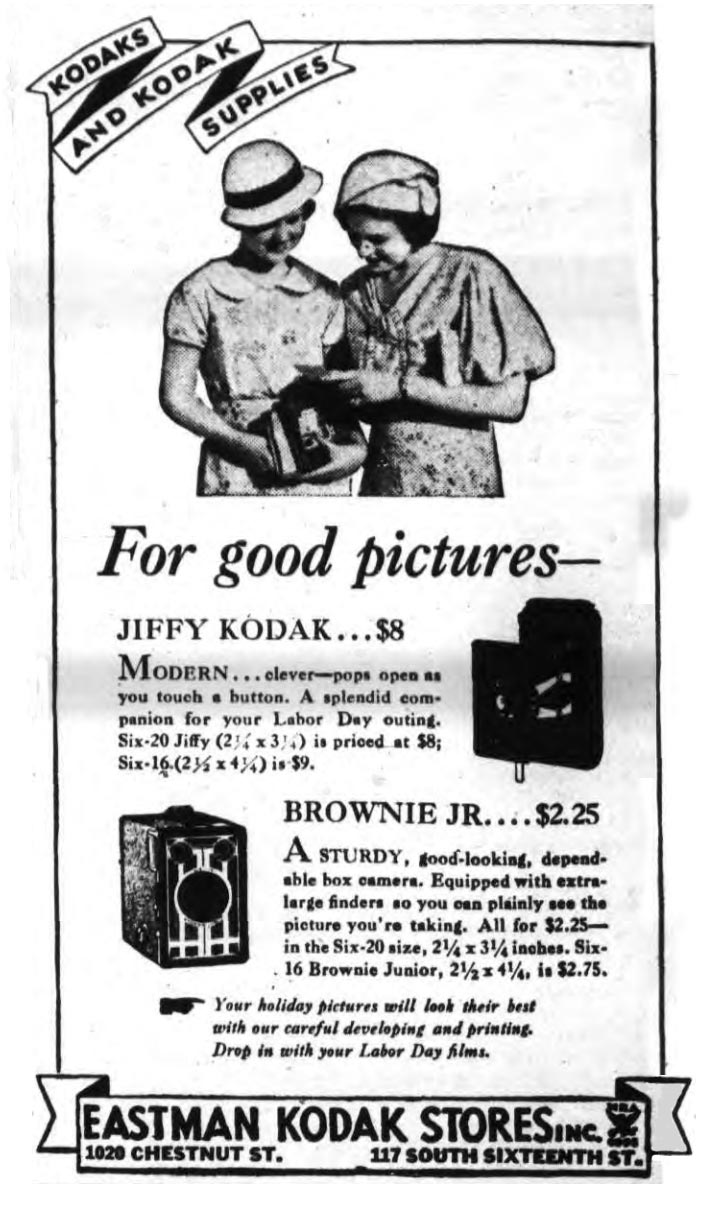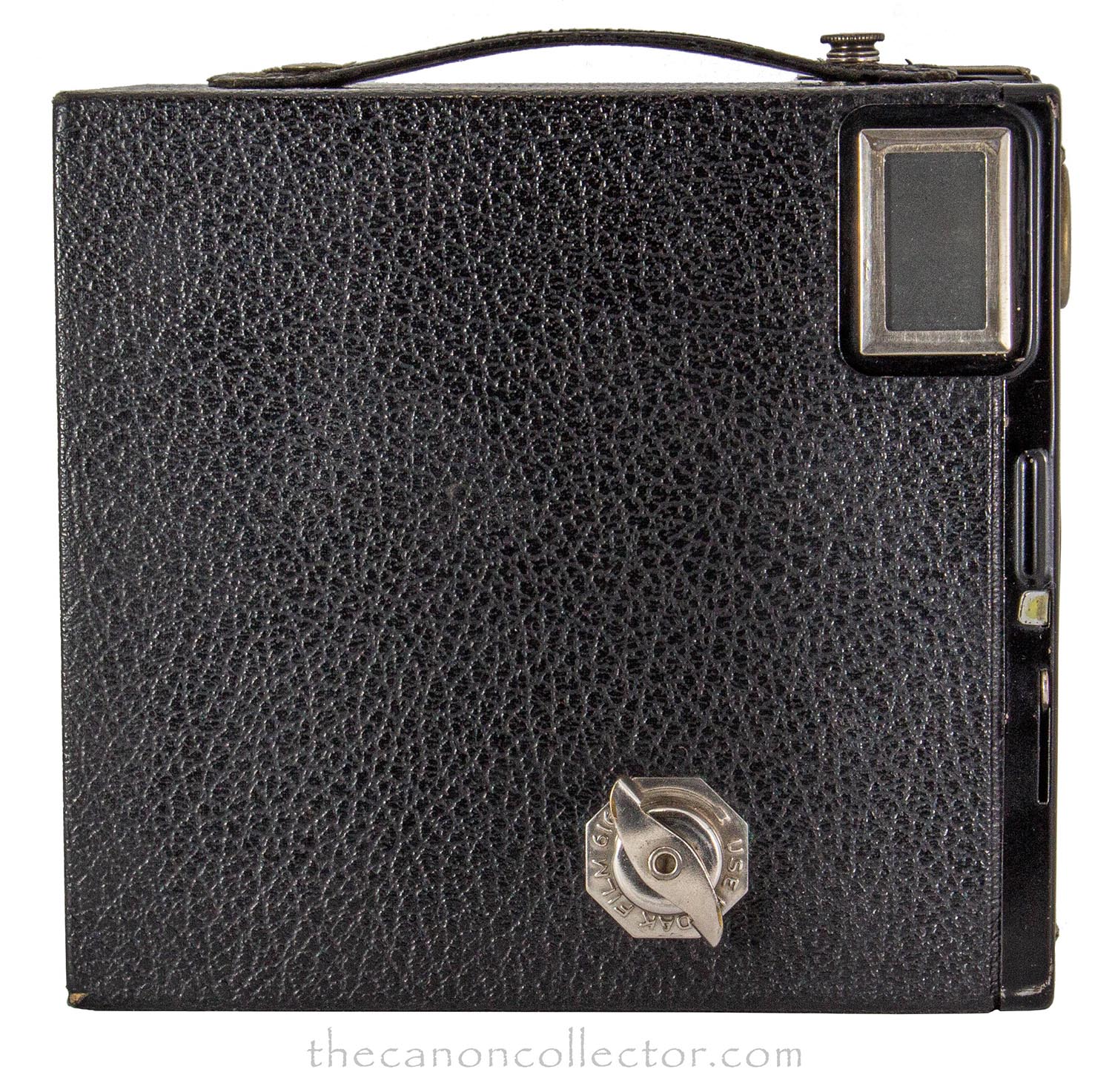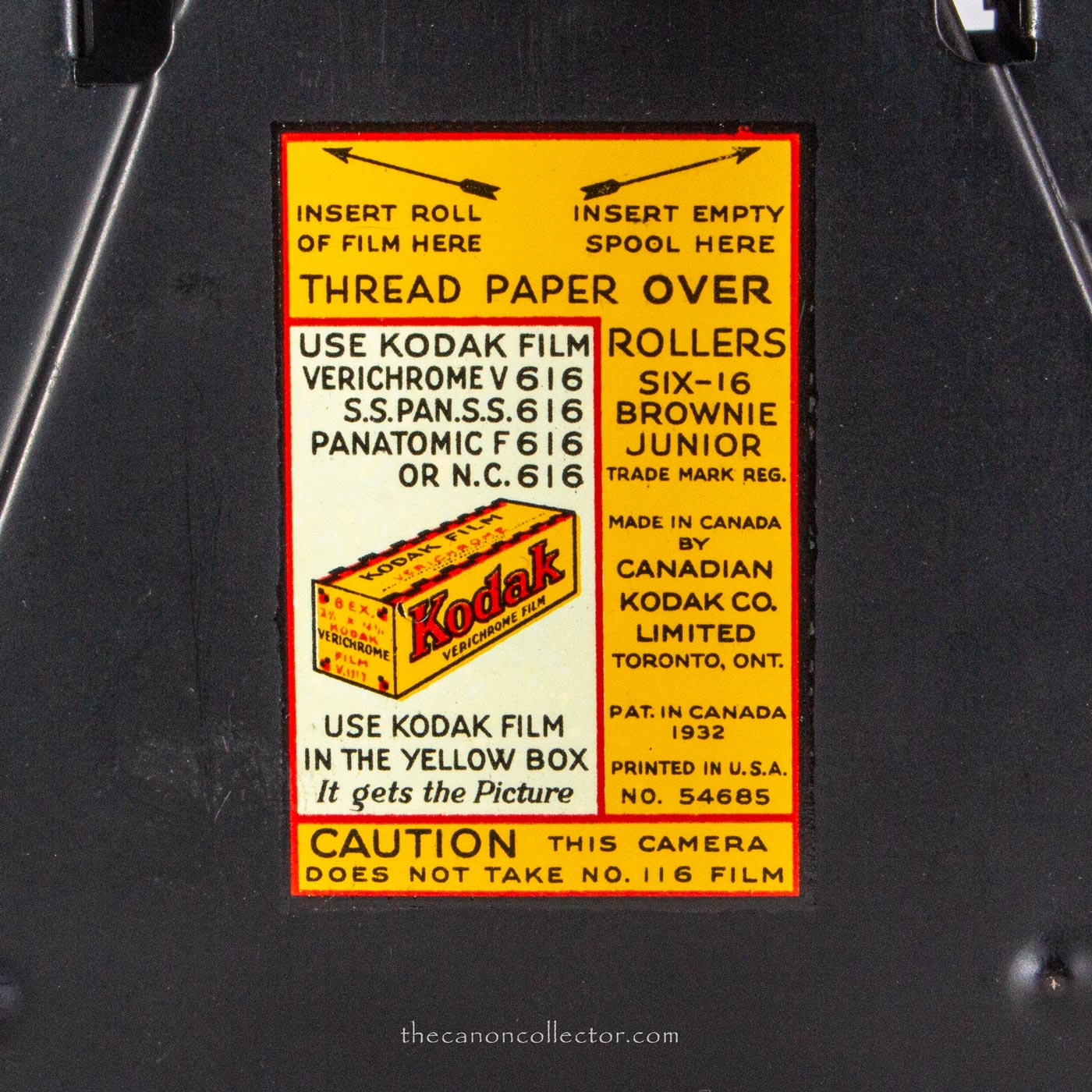Kodak Brownie Junior Six-16
A Pretty Big Box Camera
It has happened again! I was looking around inside my favorite knick-knack sort of antique store in the shopping area near our home and there was a beautiful big Kodak box camera. It was this Kodak Brownie Junior Six-16. I do not collect Kodak cameras, I keep telling myself, but this camera was in excellent condition and it was crying out to me. What was I to do. And so, after a little bargaining, I walked out with it.
There was very little cleaning up to do. The camera was sound, the leatherette finish was beautiful but a little dusty. The carry handle on top was good but the ends were worn and beginning to fray. So I had a little repair work to do there. The shutter was working but the two view finders were not. That had to be investigated at some point.
Eastman Kodak introduced the Junior Six-16 in February of 1934 and it was in production for about eight years until October of 1942. The camera box is made of sheet metal covered with leatherette. It feels much more sturdy than the cardboard bodies of, say, the No. 2 Brownie Hawk-eye Model C and is obviously more sturdy.
It has a single meniscus lens which is behind a rotary shutter and glass window on the front of the camera. There is a tab on the top front of the camera which can be pulled up. This allows selection of one of two f/ stops, about f/11 in the down position and f/16 in the up position. Shutter speed is about 1/30th of a second and there is a B setting engaged by pulling out a metal tab on the right side of the front of the camera.
The film winder on the bottom edge turns counter-clockwise to advance the film. To open the camera, pull it out and lift the front strap pin on the top and pull the front out of the box.
On the top of the camera is the vertical viewfinder window. Below that is the small metal tab that you pull up to stop the camera down fron f/11 to f/16, approximately.
Pulling the camera apart the inner metal box is exposed to allow you to load a roll of film. The fresh roll goes in the top and the paper wraps around the end of the box to the take up spool in the bottom.
This is a clear image of the label on the inside of the camera. You can see that my camera was Canadian made in Toronto.
This camera takes 616 roll film which Kodak introduced in 1932 for the Kodak six-16 camera. The film is 70mm wide which makes it wider than 120 film. And the image size on that film is a huge 2 1/2 inches by 4 1/4 inches. We are almost into sheet film sizes. That is a big negative! 616 film went out of production in 1984, a victum of the success of the 120 format.
It is possible to shoot 120 film in this camera. You have to put a shim on each end of the spool to center the spool in the camera body and you simply thread the paper into the original 616 take up spool. Shims are available online made for this purpose or you can simply create your own by gluing layers of cardboard cut in circles using the 120 reel as a template. I have not tried this yet but I want to.
One set of numbers printed on the 120 film backing paper will line up with the red window on the back of the camera body so you can see where you are. However, the negative size is wrong. You have to go to the number “3” for your first exposure and then to 6, 9 and finally 12 and 15. You get 5 negatives on one roll of film.
Now, a word of warning. Because the 120 film is not as wide as 616 the exposed film fits very loosely on the 616 spool and the edges are not light sealed. You must unload the film in a completely dark room and the film must be placed in a developing tank or rewound onto a 120 spool so that the edges are light tight. This is not difficult but care must be taken not to ruin the film.
If you look carefully you can see the aperture in the center of the window on the front of the camera. The shutter is open on the “B” setting. The aperture uses only a small portion of the center of the lens.
As you can see in the image above, the aperture restricts the part of the lens actually used to the very center of it. I wrote about this when examining the meniscus lens in the Brownie Hawkeye. The lens is very poor as you leave the center area but if you stay to the very center the lens is not bad, considering that it is a single piece of glass and the optical surfaces are not coated.
When I got the camera the two viewfinders, one vertical and one horizontal format, were not working. I took the front panel off the camera and found that the mirrors were totally degrade, but, more than that, they had been glued in place and the glue had failed and they were lying loose in the camera.
It was a simple matter to cut two pieces of mirror glass the same size and glue them back into the camera. Then I cleaned all the lens surfaces and put the camera back together. And the viewfinders were functional again. They were dim and not in sharp focus but they were functional. I don’t think they were ever very good. But remember that this camera is meant for full sun so there will be lots of light to overcome the failings of the viewfinders.
And that is my Brownie Junior Six-16. Now all that remains to do is buy a roll of 120 film and wait for a sunny day. Spring is coming! When I have taken my roll of film with this camera I will write about it and show the pictures I get.
This camera is so simple that instructions are not really necessary but I have included the manual for it here on the left. Click on the cover and the manual will open for you. It is a fun read.
Lots of these cameras were made and they are easy to find. Prices are very reasonable, like $5.00 at a swap meet or garage sale up to the $40.00 I paid for mine. The better the condition the more you can expect to pay. Check them out on E-bay to get an idea of prices.
This website is the work of R. Flynn Marr who is solely responsible for its contents which are subject to his claim of copyright. User Manuals, Brochures and Advertising Materials of Canon and other manufacturers available on this site are subject to the copyright claims and are the property of Canon and other manufacturers and they are offered here for personal use only.











